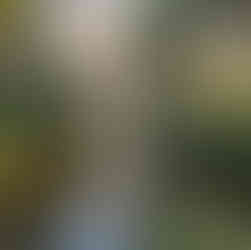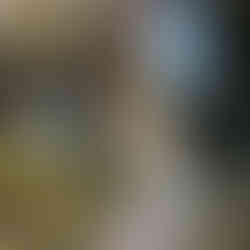Continued from Star Trails Adventures Part 3
After my trip to the Florida Everglades, I visited Bok Tower Gardens, home to the Edward Bok Carilion Bell Tower, built-in 1925. It is also known as The Singing Tower, located in Lake Wales, on Florida's highest point above sea level, not in the panhandle. During the day, the gardens and The Tower are magnificent to view and hear.
A few times a year, the Gardens hosts events after 6 PM. It is one of the few times the public has nighttime access. I've made a few successful captures during my previous visits, and I was hoping to add another night of star trail chasing.
My last after-hours visit was on January 25, 2020. Their after-hours typically run from 7 PM to 9 PM, so it's best to do a night photography shoot at Bok Tower before the time change in March. As you can see from the folks who wandered around with flashlights and phones in the photo below, several patrons were in attendance that night.

Gear and Settings Used - O-MD PEN-F, M.Zuiko 12-40mm f/2.8 PRO, and a MeFoto Globetrotter Tripod. The camera settings were f/2.8 with a 20-second shutter speed at 800 ISO. The only modification I made was for the Live Composite setting with 120 captures for a total exposure time of 40 minutes. I made some global edits in Lightroom and used Aurora HDR to tweak the tonal range.
However, for this next visit, I planned to be there and shoot in the golden hour, the blue hour, and then use Live Composite to create star trails. The weekend before in the Everglades, the weather wasn't in my favor. This weekend it looked like it would, and was clear skies throughout the photoshoot. I sent out an invite to the Low Light Photo Group and was joined happily by a few photographers.
I took a few shots during the day of the North and Southside of the Tower. I focused on keeping as much of the sky as possible in both. My main focus was on the Southside looking North. The sides of the Tower face almost directly align with the endpoints of a compass. Once I had my late afternoon and early evening shots, I waited for nighttime to begin.
Gear and Settings Used - O-MD E-M1 II and a MeFoto Globetrotter Tripod. Northside Photo - I created it with M.Zuiko 12-40mm f/2.8 PRO at 12mm with an ISO 200, f/2.8, and 1/128. I did the photo edits in Lightroom and then did some cosmetic sky replacement in Luminar Neo. Southside Photo - Using the M.Zuiko ED 75-300mm f4.8-6.7 II at 75mm, I created the image here from a series of photos shot at ISO 200 with an f/4.8 at 1/100 of a second. These were stitched back together in Photoshop's Photomerge feature.
While waiting for nighttime, I left the camera shooting a time-lapse video. It wasn't until I was halfway through the time-lapse that I changed my mind about the horizontal shot. I ended up re-shooting the Southside with my 75-300mm lens vertically. The next challenge was a bright light from the high school sports field a few miles away. It was so bright and high up it caused shadows to appear across the Tower's South face. They hadn't been there before last time. (sigh) You can see below the sky was lit up like daytime.
Fortunately, I could blend the light into those shadows away with my previous daytime photos.

Gear and Settings Used - O-MD E-M1 II, M.Zuiko 12-40mm f/2.8 PRO at 12mm, I blended the daylight photo I created earlier with a 27-minute exposure comprised of 162 Live Composite shots with an ISO 1600, f/2.8, and 10 seconds. I did the editing in Photoshop and some tonal tweaking in Luminar NEO.
The Northside's edits presented another challenge from the extremely bright light illuminating only the bottom half of the Tower. Editing the Northside face of the Tower required some HDR magic blended with a daylight photo. As I was working on the digital modifications, a slightly rephrased verse from Dylan Thomas rattled back and forth in my mind, "Rage, rage against the brilliance of the light."

Gear and Settings Used - O-MD E-M1 II, M.Zuiko 12-40mm f/2.8 PRO at 12mm. The settings were all over the place between the daylight and bracketed nighttime photos. I created the picture in various stages within Photoshop and Luminar NEO.
This recent shooting experience at Bok Tower Gardens re-emphasized the trouble light pollution can cause. Maybe I'll have better luck at the next Bok After Dark event. The next time I do this, I'll need to check the local school schedule for night games.
Final Thoughts:
Creating star trails isn't hard to do with the right gear and software. There even are ways to make star trails digitally from a single shot. In the good old days, photographers created star trails on film with a long exposure instead of multiple exposures. I prefer the multiple exposures method. Plus, with the Olympus Live Composite, the ability to see the Earth spins on its axis and watch it play out on my screen. It's a process I've not tired of seeing.
It's easy to take for granted the night sky, especially with growing light pollution. According to some reports, light pollution will gradually be more pervasive concerning human health. It's one of those things that most people take hardly any notice of. I wonder what the night sky will be like for my son's grandkids.
I want to remind the viewer how small humankind is with my photos. How important we try to be kinder to each other and this small pebble in the universe we live on. We are just stories at the end; we only need to make them a good one.
Notes:
I use various pieces of software to control and modify the image after capture. My goto editing tools are Adobe Photoshop and Luminar NEO. They provide the necessary workflow for about 80% of what I edit. The other software I use is Aurora HDR, but not as much as I used to. For global edits and I use either Adobe Lightroom or Capture One 22. However, I do feel Capture One 22 does a better job with subtle color changes than Lightroom
At this time, I prefer shooting with the Olympus now OM Digital system. It's an excellent tool for a photographer's workflow for night skies; if you want to see some magnificent results, check out the Nightscapes by Peter Baumgarten.









コメント